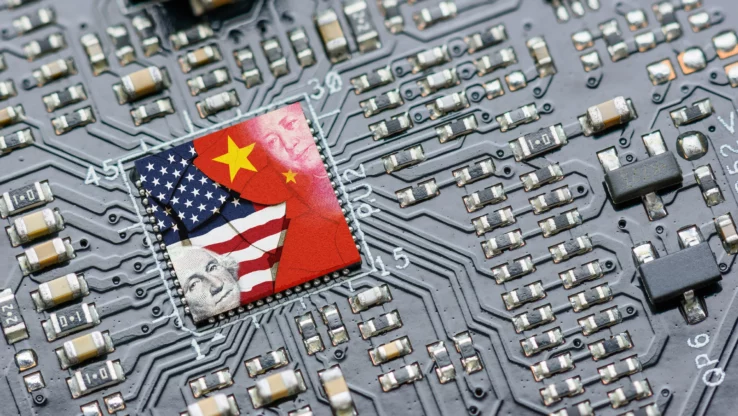A Chance Find to Change the World?
18. January 2024
While testing a new microscope, researchers at Columbia University stumbled upon a superatomic material, the catchily named Re6Se8Cl2. This semiconductor exhibits unexpectedly rapid charge movements, promising to revolutionize electronics.
In a eureka moment at Columbia University’s labs, researchers examining a previously synthesized semiconductor under a new microscope witnessed astonishing capabilities when exposed to light.
This could have immense implications for the electronics industry. Semiconductors are crucial in the functioning of digital devices like computers and smartphones, controlling electrical currents to process and store information. However, the performance of traditional semiconductors like silicon is limited. Energy loss in the form of heat occurs when atoms in the material move, a physical barrier that Re6Se8Cl2 could significantly lower.
What makes Re6Se8Cl2 so unique?
Re6Se8Cl2 represents a breakthrough in semiconductor research. Comprising rhenium, selenium, and chlorine, it exhibits superatomic properties. Superatoms, clusters of atoms acting like a single, larger atom, possess unique characteristics different from their individual elements, offering more than the sum of their parts.
The compound’s distinctiveness lies in its exceptional efficiency in transporting charge carriers almost without scattering. In this material, particles known as excitons move in straight lines, avoiding the irregular movements typical in silicon. This allows electrons in Re6Se8Cl2 to move twice as fast as in silicon and even 23 times faster than in tungsten diselenide.
The potential applications are vast. Re6Se8Cl2 could drastically increase the speed of computers and other electronic devices, allowing processors to operate at hundreds of gigahertz or even terahertz. This higher speed would enable much faster complex calculations, a significant advantage in fields like artificial intelligence, data analysis, and advanced communication technologies. While the industry has yet to comment on Re6Se8Cl2, its properties were only revealed a few weeks ago. Leading technology companies and research institutes are likely to show great interest in this material.
The Future of Semiconductor Technology?
However, challenges exist. The production of Re6Se8Cl2 is difficult due to the rarity and high cost of rhenium. Rhenium is found in the continental crust at only 0.7 ppb, and in December 2023, it cost over 1,800 euros per kilogram, compared to silicon’s current price of around 12 euros.
Mass production of Re6Se8Cl2 is currently impractical. It’s more likely to be used in specialized applications like aerospace or quantum computing.
The discovery of Re6Se8Cl2 exemplifies how chance can advance science. The team at Columbia University is already exploring similar superatomic materials that could possess the same or even better properties. We can look forward to future semiconductor discoveries and their potential to fundamentally change our digital landscape.


